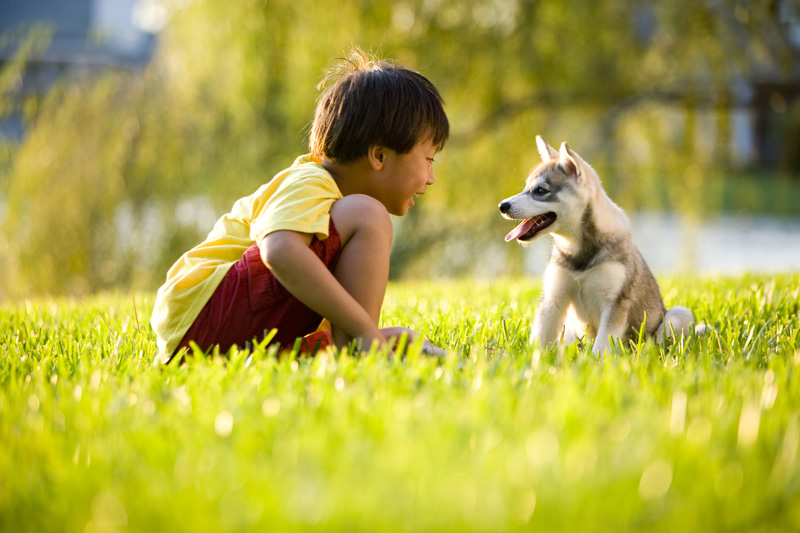
Introduction
The bond between humans and animals has been a source of fascination throughout history. From loyal canine companions to affectionate feline friends, the emotional connections between humans and animals are undeniable. In recent years, scientific research has delved into understanding the intricate dynamics of this unique relationship, unveiling a world of emotions, cognition, and mutual understanding. This exploration of the science behind animals’ love for humans not only sheds light on the evolutionary aspects of such connections but also highlights the profound impact these relationships have on both the animals and their human counterparts.
Evolutionary Roots of Animal-Human Bonds:
The origins of the close bond between humans and animals can be traced back to the early stages of human evolution. As our ancestors forged connections with animals for survival, a mutualistic relationship emerged. Wolves, for example, may have been drawn to human campsites for food scraps, eventually evolving into domesticated dogs. This symbiotic alliance provided benefits for both species, laying the foundation for the emotional bonds we witness today.
Research has revealed that oxytocin, often referred to as the “love hormone,” plays a crucial role in bonding. This hormone is not exclusive to humans; animals, too, experience an oxytocin surge during positive social interactions. The reciprocity of this neurochemical response may contribute to the strong emotional ties formed between humans and their animal companions.
Emotional Intelligence in Animals:
Contrary to traditional beliefs, animals exhibit a remarkable degree of emotional intelligence. Studies have demonstrated that animals can experience a range of emotions, including joy, fear, and even empathy. Observations of elephants mourning their deceased companions or dogs comforting distressed humans illustrate the depth of emotional understanding present in the animal kingdom.
Furthermore, animals possess the ability to interpret human emotions. Dogs, for instance, can discern human facial expressions and respond accordingly. This emotional attunement fosters a sense of connection, laying the groundwork for the reciprocal affection that forms the core of many human-animal relationships.
The Role of Communication:
Communication is a vital component of any relationship, and the human-animal bond is no exception. While animals may lack human language, they communicate through a complex system of vocalizations, body language, and pheromones. Understanding and responding to these signals enable humans to forge deeper connections with their animal companions.
Recent advancements in animal communication research have unveiled the sophistication of non-verbal cues in the animal kingdom. Whether it’s a cat’s purring, a dog’s wagging tail, or a horse’s ear position, these subtle signals convey a wealth of information about an animal’s emotional state and intentions. Humans, in turn, adapt their communication styles to foster understanding and strengthen the emotional bonds with their animal counterparts.
Mutual Benefits of Human-Animal Relationships:
Beyond the emotional aspects, the science behind animals’ love for humans extends to the tangible benefits experienced by both parties. Numerous studies have highlighted the positive impact of animal companionship on human well-being, including reduced stress levels, lower blood pressure, and improved mental health.
Conversely, animals benefit from the companionship and care provided by humans. Domesticated animals, in particular, thrive in environments where they receive affection, proper care, and a sense of belonging. The reciprocation of care and companionship creates a harmonious relationship that transcends the boundaries of species.
Unveiling the Neurobiology of Animal Affection:
Neuroscientific research has delved into the intricacies of the brain to understand the neural mechanisms underpinning the affectionate bond between humans and animals. Brain imaging studies, conducted on both humans and animals, have identified areas associated with social bonding, reward processing, and empathy.
The release of neurotransmitters such as dopamine and serotonin during positive interactions contributes to the reinforcement of these bonds. Understanding the neurobiological basis of animal affection provides valuable insights into the shared evolutionary pathways that have shaped the human-animal relationship.
Conclusion:
The science behind animals’ love for humans is a multifaceted exploration that combines evolutionary history, emotional intelligence, communication dynamics, and neurobiology. As we unravel the complexities of this unique bond, we gain a deeper appreciation for the interconnectedness of all living beings. The reciprocal love and companionship shared between humans and animals not only enrich our lives but also underscore the profound impact of empathy, understanding, and mutual care across species boundaries. Embracing this scientific journey allows us to celebrate the beauty of the human-animal connection and fosters a greater sense of responsibility towards the welfare of our fellow creatures on this shared planet.
Source : https://sites.google.com/site/bestessaywritingservicereview/








